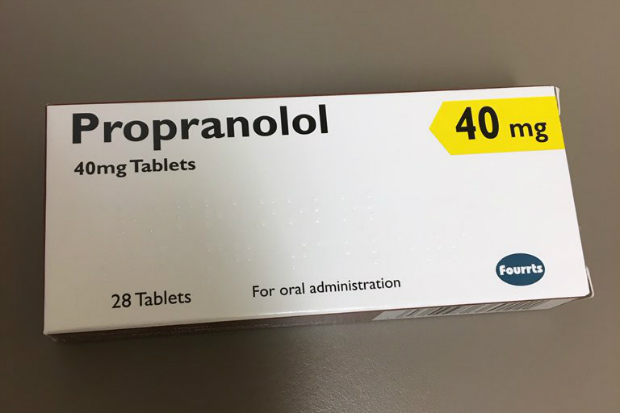| Parameters | Details |
|---|---|
| Category of Drug | Propranolol is Antianginal Drugs (beta-adrenergic receptor antagonist) |
| Mechanism of Action | Propranolol is a nonselective β-adrenergic receptor antagonist. It blocks β-adrenergic receptors leading to vasoconstriction. It also inhibits vascular endothelial growth factor. |
| Structure | |
| Indications (1) | Propranolol is used for 1. Cardiac arrhythmias 2. Tachycardia 3. Hypertrophic obstructive cardiac myopathy 4. Pheochromocytoma 5. Thrombosis 6. Management of angina 7. essential and renal hypertension 8. Prophylaxis of migraine |
| Pharmacokinetic properties | 1. Tmax – 2 hours 2. Vd- 4L/kg 3. Protein binding- Approximately 90% of propranolol is protein-bound in plasma. 4. Metabolism- 17% of a dose undergoes glucuronidation and 42% undergo ring oxidation. 5. Route of elimination- 91% in the urine 6. Half-life- 8 hours. |
| Well Known Pharmaceutical Brands | 1. CIPLAR- CIPLA 2. BETACAP-TR- SUN 3. INDERAL- ABBOTT 4. PROVANOL- INTAS PHARMA |
| Available dosage forms | 1. TABLETS 2. CAPSULES 3. INJECTION  |
| Dose | Oral dose- initially 40 mg 2 to 3 times a day. Maintenance dose 80 to 160 mg daily. |
| Contraindications | 1. Asthma 2. Uncontrolled heart failure 3. Prinzmetal’s angina 4. Marked bradycardia 5. Hypotension 6. Sick sinus syndrome 7. Second- or third-degree AV block 8. Cardiogenic shock 9. Metabolic acidosis 10. Severe peripheral arterial disease 11. Pheochromocytoma |
| Precautions | 1. Avoid abrupt withdrawal especially in ischaemic heart disease 2. First-degree AV block 3. Portal hypertension 4. Diabetes 5. History of obstructive airways disease 6. Myasthenia gravis 7. Symptoms of hypoglycaemia and thyrotoxicosis may be masked 8. History of hypersensitivity- may increase sensitivity to allergens and result in more serious hypersensitivity response 9. Also may reduce response to adrenaline |
| Adverse Effects | 1. Gastrointestinal disturbances 2. Bradycardia 3. Heart failure 4. Hypotension 5. Conduction disorders 6. Peripheral vasoconstriction 7. Bronchospasm 8. Dyspnoea 9. Headache 10. Fatigue 11. Sleep disturbances 12. Paraesthesia 13. Dizziness 14. Vertigo 15. Psychosis 16. sexual dysfunction 17. Purpura |
| Pregnancy Category | C |

